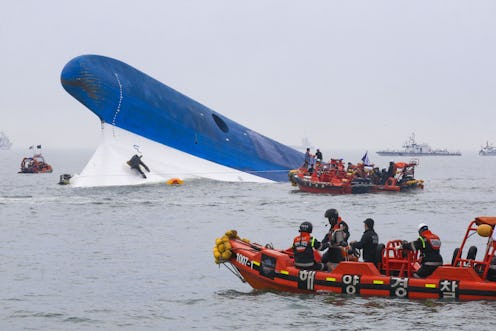News
Sunken Ferry Was Often Overloaded
An investigation has revealed that the sunken South Korean ferry was routinely overloaded in the months before it sank and left over 300 people either dead or missing. New documents first reported Sunday show that in the 13 months before the ferry sank, it was overloaded on 246 occasions – nearly every trip it took. The eventual sinking, which now appears to have been inevitable, highlights dangerous oversights in South Korea's regulatory structures.
Despite having a 987-ton limit, the Sewol ferry was carrying more than three times its weight limit when it sank on April 16. The vehicle's operators reportedly fit more cargo on the ferry by reducing its ballast water, which is used to stabilize a ship. In addition to carrying well over 3,000 tons of cargo, the ferry had also reportedly undergone modifications to add more cabins and unreported heavy machinery.
The ultimate problem that led to the tragic disaster appears to have been South Korea's regulatory infrastructure. Although regulatory entities for domestic passenger ships in the country monitor weight limits and actual cargo weight, those two metrics are recorded by two separate organizations. According to reports, the Korean Register of Shipping halved the ferry's previous weight limit early last year but only gave its report to the ship's owners.
The organizations that monitor actual weight, the coast guard and the Korean Shipping Association, kept measuring cargo amounts but were never notified of the new limit by the Register of Shipping. The ship's owners allegedly reported its limit as 3,963 tons – a claim that was never checked with the limit-setting authorities. Port operators also record cargo, but only for statistical reasons. According to port documents, on the day it sank, the ferry's weight was its highest ever.
